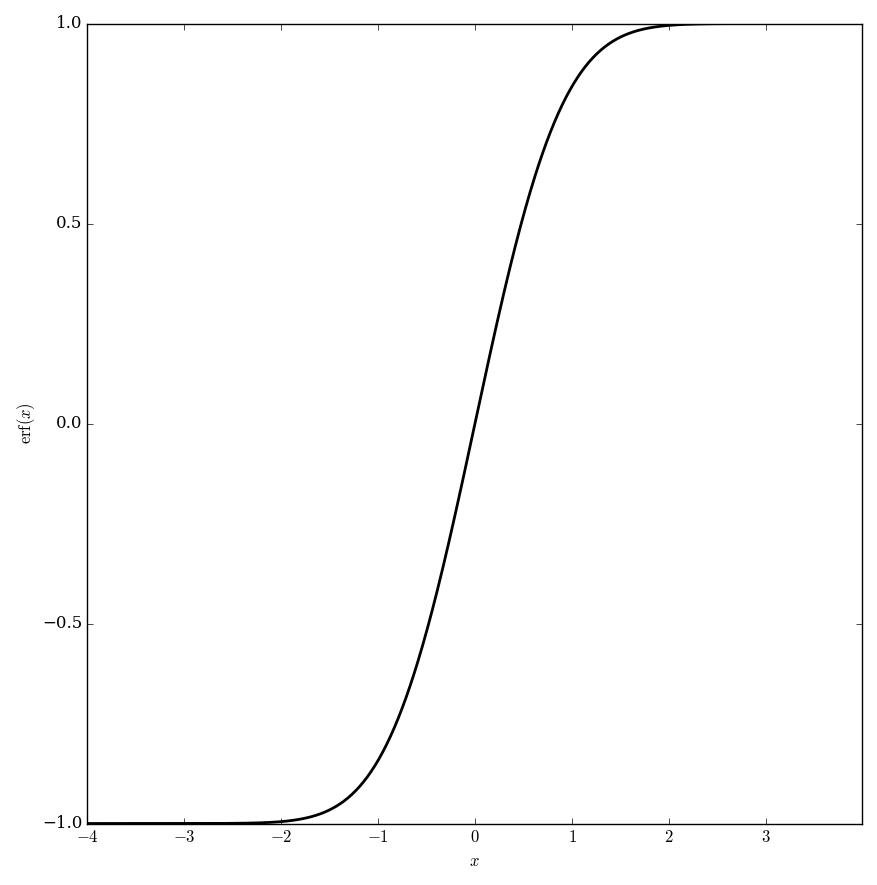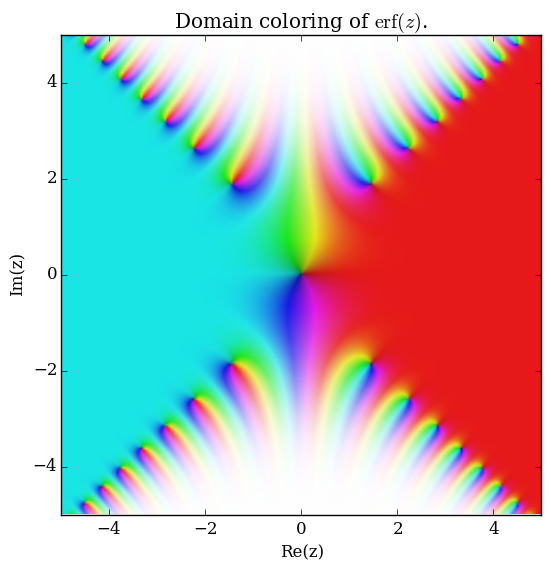Difference between revisions of "Error function"
| Line 1: | Line 1: | ||
The error function $\mathrm{erf}$ is defined by | The error function $\mathrm{erf}$ is defined by | ||
| − | $$\mathrm{erf}(x)=\dfrac{2}{\sqrt{\pi}}\displaystyle\int_0^x e^{-\tau^2} \mathrm{d}\tau | + | $$\mathrm{erf}(x)=\dfrac{2}{\sqrt{\pi}}\displaystyle\int_0^x e^{-\tau^2} \mathrm{d}\tau,$$ |
| + | where $\pi$ denotes [[pi]] and $e^{-\tau^2}$ denotes the [[exponential]] function. | ||
<div align="center"> | <div align="center"> | ||
Revision as of 04:01, 3 October 2016
The error function $\mathrm{erf}$ is defined by $$\mathrm{erf}(x)=\dfrac{2}{\sqrt{\pi}}\displaystyle\int_0^x e^{-\tau^2} \mathrm{d}\tau,$$ where $\pi$ denotes pi and $e^{-\tau^2}$ denotes the exponential function.
Domain coloring of $\mathrm{erf}$.
Properties
Taylor series for error function
Series for erf with exponential factored out
Error function is odd
Complex conjugate of argument of error function
Two-sided inequality for e^(x^2) integral from x to infinity e^(-t^2) dt for non-negative real x
Limit of erf when z approaches infinity and the modulus of arg(z) is less than pi/4
Theorem: The following formula holds: $\dfrac{1}{2} \left( 1 + \mathrm{erf} \left( \dfrac{x-\mu}{\sqrt{2}\sigma} \right) \right)=\dfrac{1}{\sigma \sqrt{2 \pi}} \displaystyle\int_{-\infty}^x \exp \left( -\dfrac{(t-\mu)^2}{2\sigma^2} \right)\mathrm{d}t.$
Proof: █
Videos
The Laplace transform of the error function $\mathrm{erf}(t)$
The Error function
Video 1690 - ERF Function
References
- 1964: Milton Abramowitz and Irene A. Stegun: Handbook of mathematical functions ... (previous) ... (next): 7.1.1

